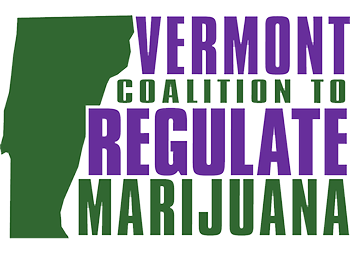Despite the best efforts of law enforcement over the course of many decades, marijuana remains widely available and widely used in Vermont.
As long as the production and sale of marijuana is illegal, the lucrative market for marijuana will continue to be dominated by cartels and organized crime. While marijuana use is not associated with violent behavior, these dangerous enterprises certainly are, devastating communities around the world.
Although there are harms associated with heavy marijuana use, these harms have been greatly exaggerated, and they pale in comparison with the harms associated with heavy drinking and the use of tobacco and drugs like heroin or cocaine. In reality, marijuana is less harmful than alcohol — both for its users and for society at large — and there is no good reason to prohibit adults from choosing a safer substance.
According to a poll conducted by the Castleton Polling Institute in 2015, 56% of Vermonters support regulating and taxing marijuana in Vermont. Only 34% said they were opposed.
Many credible researchers have debunked the theory that marijuana is a “gateway drug,” and the prestigious Institute of Medicine observed that, “there is no evidence that marijuana serves as a stepping stone on the basis of its particular physiological effect … Instead, the legal status of marijuana makes it a gateway drug” (details available here). Allowing marijuana to be sold in regulated stores would dramatically reduce the likelihood that marijuana users will be offered opiates or other dangerous drugs, and this should be considered a clear benefit of regulation.
Education and regulation have been effective approaches for reducing tobacco use. In the past 15 years, rates of teen smoking have cut in half in the United States. This result was not achieved by arresting adults for their decision to smoke tobacco. Instead, tobacco policy has focused on honest education and regulation, and the results have been very encouraging. During the same time period, teen marijuana use rates have remained relatively constant despite marijuana being prohibited. Today, more teens report using marijuana than tobacco, further illustrating the folly of prohibition.
Education and regulation have been effective approaches for reducing tobacco use. In the past 15 years, rates of teen smoking have cut in half in the United States. This result was not achieved by arresting adults for their decision to smoke tobacco. Instead, tobacco policy has focused on honest education and regulation, and the results have been very encouraging. During the same time period, teen marijuana use rates have remained relatively constant despite marijuana being prohibited. Today, more teens report using marijuana than tobacco, further illustrating the folly of prohibition.
A 2013 report by the American Civil Liberties Union found that, in 2010, African Americans in Vermont were 4.4 times more likely be arrested on marijuana charges than whites, despite the fact that blacks and whites reported using marijuana at nearly identical rates. This disparity was greater than the national marijuana arrest rate, which was 3.7 times greater for African Americans than it was for whites.
Criminal marijuana growers often hide their operations in national forests and wilderness areas, diverting waterways, leaving behind batteries and diesel fuel, and causing great environmental damage. Legal, regulated cultivation of marijuana for would turn the process over to law-abiding businesses and create jobs for responsible, environmentally conscious Vermont farmers.
Marijuana is often referred to under our current policies as a “controlled drug,” but nothing could be further from the truth. According to a report prepared by the Rand Corporation for Vermont, about 80,000 Vermonters use marijuana each month. Of these, only a small fraction (4,400 as of October 2017) has state-legal access and protection under Vermont’s medical marijuana law.
